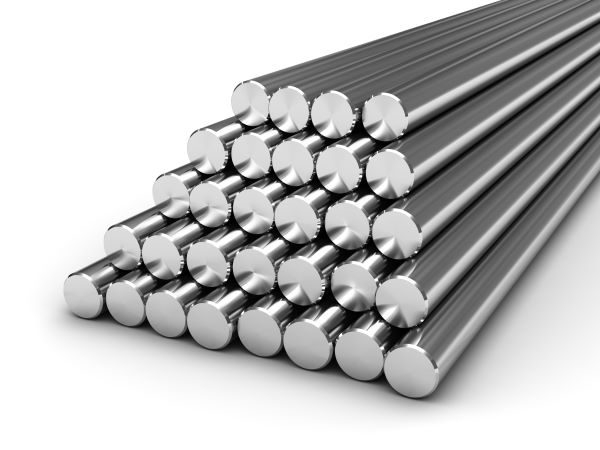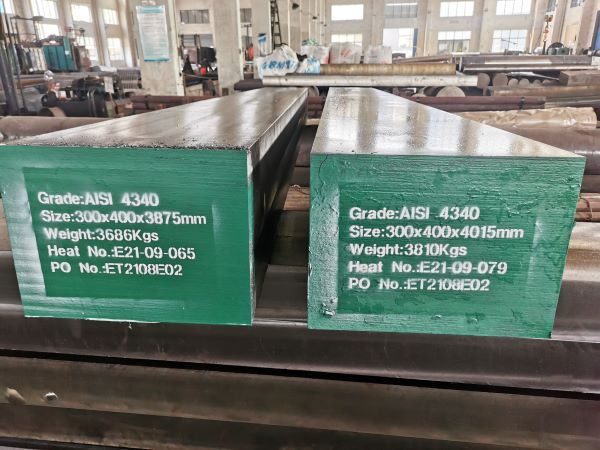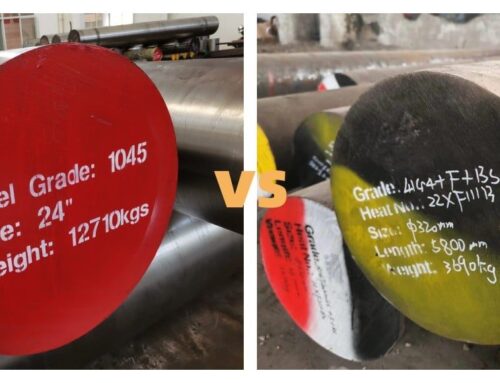
As alloy steels, 4140 and 4340 steels are widely used in various industries, especially in the oil and gas industry, where they play an important role.
As a veteran in the industry,we are confident that we know more about 4140 and 4340 than others.However, whenever customers come to ask them for some details, we can’t answer them for a while, which is really embarrassing.
Adhere to the principle of endless learning and customer service, this article will describe the differences between 4140 and 4340 in depth.
1.Steel Grade & Chemical Composition
4140 and 4340 steel, as the standard grades of the United States, have their own unique rules, especially the naming of steel grades has an inherent relationship with the chemical composition. Since we are talking about the difference, we can’t get around this, let’s take a look at it in detail.
| 4140 | Classification rule | 41 | 40 | ||||||
| Cr 0.50/0.8/0.95%, Mo 0.12/0.20/0.30% | C 0.4% average | ||||||||
| Standard | Cr | Mo | Ni | Mn | C | Si | P | S | |
| 0.8-1.1 | 0.15-0.25 | - | 0.75-1.00 | 0.38-0.43 | 0.15-0.35 | ≤0.035 | ≤0.04 | ||
| 4340 | Classification rule | 43 | 40 | ||||||
| Cr 0.50/0.80%, Mo 0.25%,Ni 1.82% | C 0.4% average | ||||||||
| Standard | Cr | Mo | Ni | Mn | C | Si | P | S | |
| 0.7-0.9 | 0.2-0.3 | 1.65-2.0 | 0.6-0.8 | 0.38-0.43 | 0.15-0.35 | ≤0.035 | ≤0.04 | ||
From the above table, we can clearly know the naming principles of 4140 and 4340, and clearly see the internal connection and difference between the steel number and chemical element composition. 4140 and 4340 still have certain differences in alloying elements, especially in Ni elements.
2.Manufacturing Cost
As can be seen from the above table, the difference in alloying elements between 4140 and 4340 steels directly leads to differences in their manufacturing costs.
Considering that under the same smelting conditions, the manufacturing cost of 4340 steel is about 50% higher than that of 4140 steel. In addition, the cost of electroslag remelting (ESR) is higher than that of ordinary electric arc furnace, and the cost of ingot casting is higher than that of continuous casting.
3.Weldability
The index that determines the weldability of steel is mainly carbon content, and alloying elements also play an important role in the weldability of steel.
According to the carbon equivalent formula CE=C+Mn/6+(Cr+Mo+V)/5+(Ni+Cu)/15, we can roughly estimate the equivalent values of 4140 and 4340. In the case of the same carbon content, The CE value of 4140 is around 0.78, while that of 4340 is around 0.85. Obviously, the difference comes from the content of alloying elements.
According to experience, when CE≥0.6%, the weldability is poor. Therefore, 4140 and 4340 steel are materials that are difficult to weld, but it does not mean that they cannot be welded. Their welding requires higher preheating temperature and strict welding process method, which is another topic and will not be described here.
4.Cold Workability
Cold working of steel refers to the processing of steel at room temperature. Common cold working methods are: cold drawing, cold rolling, cold bending, etc.
The steel is plastically deformed by cold working, and the strength and hardness are obviously improved, while the plasticity and toughness are reduced. This process is called cold working strengthening treatment.
Since both 4140 and 4340 steels are very ductile in the annealed condition, they are suitable for cold working under normal conditions.
5.Hot Workability
Compared with cold working, hot working is a processing method that causes plastic deformation and recrystallization of materials under conditions higher than the recrystallization temperature. Commonly used hot working processes include casting, forging, heat treatment, etc.
Hot working can change the structure of the steel while forming or change the formed material to improve the mechanical properties.
According to our experience, 4340 steel is prone to cracks due to poor process control during forging and heat treatment.In addition, the 4340 has a higher white point sensitivity than the 4140. If it is not annealed in time after forging, it is easy to produce white spots and cause the material to be scrapped.
Therefore, we feel that the hot working performance of 4140 steel is better than that of 4340 steel.
6.Machinability
4140 steel and 4340 steel are usually rough machined in the annealed state, and both can be machined by conventional methods. It can be said that their machinability is excellent.
Considering that 4140 steel and 4340 steel are usually delivered in a pre-hardened state, subsequent processing must be involved. Under the same pre-hardening hardness (28-34HRC), both 4140 steel and 4340 steel can be processed smoothly under conventional technology, but relatively speaking, 4340 steel will be slightly more difficult.The reason is that the Ni element in 4340 steel will make the machining tool viscous and difficult to break chips.
7.Mechanical Property
When we choose steel, the first thing we need to consider is whether the mechanical properties of the steel can meet the requirements of the final product.
4140 and 4340, as alloy structural steels, are generally quenched and tempered to improve their overall performance. Therefore, when we talk about the mechanical properties of 4140 and 4340 steel, we mainly refer to the mechanical properties data after quenching and tempering.
| Grade | Tensile Strength | Yield Strength | Elongation | Reduction of Area | Impact Charpy-V,+21°C | Hardness |
| 4140 | ≥931Mpa | ≥838Mpa | ≥16% | ≥50% | ≥54J | 28-32HRC |
| 4340 | ≥980Mpa | ≥835Mpa | ≥16% | ≥50% | ≥54J | 28-32HRC |
We can see from the above table that the mechanical performance data of 4140 steel and 4340 steel seem to be the same, but in practical applications, 4340 is often a level higher than 4140 in terms of strength.In the oil and gas industry, 4140 steel is mostly used in 75K and 80K level, while 4340 can be used in 110K level.
Some customers often ask us if we can use 4140 instead of 4340. We also understand this idea. First of all, 4140 steel is much cheaper than 4340 steel. Secondly, the carbon content is basically the same, and the hardness in use is also roughly the same, but in the end there will be a lot of difference in performance.
4340 steel still has good impact resistance and wear resistance under high hardness conditions, especially Ni increases the hardenability of the material, which significantly increases the toughness of the material. These are obviously not available in 4140 steel.
In the end, we need to fully consider the performance of the material from the perspective of product design. It is obviously not advisable to replace 4340 with 4140 only in terms of cost.
8.Application
In the field of application, both 4140 steel and 4340 steel are widely used in oil and gas, aerospace, automotive, agricultural and defense industries etc.Common applications of 4140 steel and 4340 steel involve various shafts, gears, rollers, flanges, etc.
However, in some heavy machinery parts or under extreme conditions that require higher strength and toughness, 4340 steel is often used. At this time, the advantage of 4340 steel is that 4140 steel cannot be replaced.
As a stockist of high-quality steel 4140 steel and 4340 steel, we are willing to provide customers with high-quality products and services. If you have this demand, please feel free to contact us.









